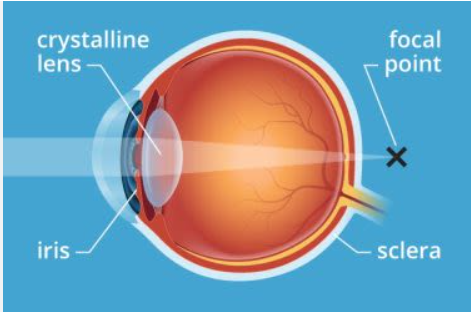Presbyopia is a common vision condition that typically emerges in middle and older age, affecting our ability to see objects up close clearly. It’s a natural part of the aging process of the eye that usually becomes noticeable in the early to mid-40s and continues to progress until around the age of 65. This blog from Shekar Eye Hospital offers an insightful look into presbyopia, detailing its causes, symptoms, and the cutting-edge treatment options available.
What is Presbyopia?
Presbyopia is derived from a Greek word meaning “old eye,” and it’s a condition that reflects the aging of the eye. It occurs when the crystalline lens of the eye, which is naturally flexible, begins to lose its elasticity. This loss of flexibility compromises the lens’s ability to change shape and focus on near objects, making tasks like reading, sewing, or working on a computer more challenging without the aid of reading glasses or other vision aids.
Causes of Presbyopia
The exact mechanism behind presbyopia is the gradual thickening and loss of flexibility of the lens inside the eye. With age, the lens becomes harder and less elastic, making it difficult to focus on close objects. This change affects the eye’s refractive ability, leading to the need for corrective lenses to assist in focusing on nearer tasks.

Recognizing the Symptoms of Presbyopia
The hallmark sign of presbyopia is the difficulty in performing close tasks, such as reading small print or doing intricate work, without holding the material further away. Other symptoms include:
- A tendency to need more light when reading or doing close work.
- Experiencing eye strain or headaches after reading or doing close tasks.
- The need to remove distance glasses to see better up close.
Understanding Presbyopia: Diagnosis and Treatment Solutions
Diagnosis of presbyopia is typically confirmed through a comprehensive eye examination by an eye care professional. Once diagnosed, there are several treatment paths available:
Reading Glasses
One of the simplest solutions is reading glasses. These are specifically designed for close work and can be used by those who do not require glasses for distance vision.
Bifocals, Trifocals, and Progressive Lenses
For individuals who already wear glasses for distance vision, bifocals or trifocals offer a combined solution. Progressive lenses offer a smooth transition between focal points, from distance correction on the top to near correction on the bottom.
Contact Lenses
Contact lenses, including bifocal and multifocal options, offer another avenue for those who prefer not to wear glasses. Some people opt for a monovision approach, where one lens is fitted for distance and the other for near vision.
Surgical Options
Advancements in medical science have introduced surgical options for correcting presbyopia. These include LASIK surgery tailored for presbyopia, corneal inlays, and lens replacement surgery. Each option comes with its own set of benefits and risks, and the choice of treatment should be made in consultation with an eye care professional.
Living with Presbyopia
Living with presbyopia means adapting to the changes in your vision needs. It might involve carrying reading glasses, adjusting the lighting in your work or reading areas, or using magnifying aids for smaller print. Regular eye exams are crucial as your vision needs may change over time.
Conclusion
While presbyopia is an unavoidable part of aging, modern medicine offers many viable options for managing this condition and maintaining a high quality of life. At Shekar Eye Hospital, our team of experts is dedicated to providing the best care and treatment options tailored to your individual needs. Remember, early detection and treatment are key to managing presbyopia effectively.






